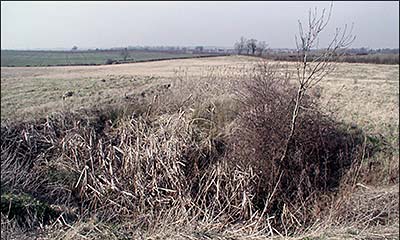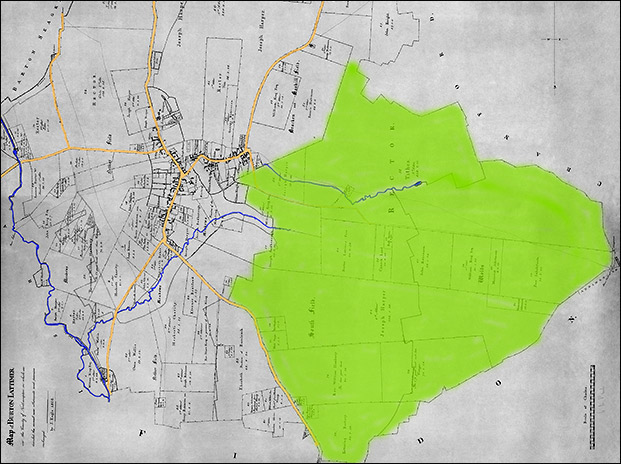|
Burton Wold, once referred to as the Old or Woalde, consisted of several hundred acres of common land to the southeast of the town that was administered by the church on behalf of the commoners, the vast majority of whom did not own their own land. The principle that it was to be used by the landless poor was reinforced in 1633 when Thomas Bacon was taken to court for trying to appropriate it for his own use and ordered to return it to its former state and pay a fine. The Manorial Court entries mention that John Peacham was reported for having ploughed with his plough the common pasture called le Olde. which was used for the neats, or cattle. He was also fined 6s 8d for making waste upon the land of the lord in cutting of wood and in cutting of trees in a certain place called Whome end and in a certain place called the close formerly of Thomas Plowright. The Old which is now known as the Wold, is still in existence.
When excavations took place on the Wold for irobstone, diggers uncovered a Saxon urn. Only one person saw its contents - a child's skull for the skull disintegrated when the seal was broken and the air allowed in.
Enclosure in Burton Latimer
Burton Latimer underwent enclosure in 1803. The parish at that time covered about 2,500 acres, of which nearly a quarter was a common or wold. The Grant of Enclosure for Burton Latimer did not go through Parliament unopposed as Sir William Dolben MP, Lord of the Manor of Finedon (also Patron of the Burton Latimer Rectory and trustee of Herbert's Charity), refused to support the Bill on several grounds. In 1803 charity land and common waste shrank from 1,100 acres in January to about 250 acres in March. Enclosure took away from the poor a Wold or Common of nearly 800 acres which provided them with fuel and sustenance for their cattle. The Wold was considered to be an important common resource, in part because right to it was attached not to land but to residence in the parish. Tomas Daniels had lived in Burton most of his life and had "stocked the Wolds with one, two or three cows as he thought proper without any interruption as did every house dweller who could get a cow". At this time "every house dweller who kept a cow could pay 4s for this common or could have it free if he owned a cottage. Inhabitant-commoners who owned or rented little or no land were variously called house dwellers, poor inhabitants, potwobblers and paupers and, at the very least, they could common a cow on the Wold free. Cottagers, unlike house-dwellers, had right attached to their cottages and they used the Wold like house dwellers but put their animals into the harvested fields without paying a fee.
|
|
|
The general extent of Burton Wold, on the eve of Enclosure in 1805
|
At the time of Enclosure the commissioners compensated the house-dwellers and cottage commoners for their 800 acres of Wold with about 73 acres situation in the same place. The area was less than a tenth of the Wold and the quality of the land was unimproved. The three fields immediately north of Harpur’s field appear to have been divided into three portions, the first and the largest was laid out as common land for the Burton Latimer Poor.
Recent excavations at the time of the establishment of the Wind Farm on the Wold found evidence of some sort of settlement dating back as far as the Bronze Age, nearly 4,000 years ago and artefacts recovered prove that the area was occupied in the late Iron Age/early Roman period. Also, cropmarks from aerial photographs revealed a rectangular complex of smaller enclosures, pits and other features, dating from the 1st - 4th centuries AD. The enclosures examined are thought to have functioned as pens for livestock. Although no evidence of houses or other structures was found, considerable quantities of pottery indicated domestic activity nearby within the enclosure complex. The site went out of use by the 4th century AD.
Banger Racing
For a short time in 1972, Burton Wold was home to "Banger Racing" when a series of old and disposable cars, fitted out for racing (and collision) were used to race against each other. Click here to read an article compiled by John Smith about Banger Racing.
|

